In March of 2022, Google first announced that it will begin sunsetting the old version of Google Analytics (Universal Analytics) on July 1, 2023.
Multiple Universal Analytics sunset reminders have been sent since then, and Google has now announced that they will create a basic a GA4 property for you if you don’t create one by March 2023.
Google Analytics 4 (GA4), which uses a G- site code, launched in late 2020 and introduced new privacy features, powerful reporting, predictive intelligence and a deeper integration with other Google products, such as Google Ads.
As many sites run the older version of Google Analytics, some panic has spread among marketers and site owners. We’ve received many questions from users about what this change means for MonsterInsights, how they can identify if they are on the older property type, how to upgrade if they are, and the changes they will see.
In this post, I’ll explain what Google’s announcement is all about, and how MonsterInsights will help make this change easier for our users and allow them to get the most out of GA4.
What does the Universal Analytics sunset mean for me?
Although you can still use both versions of Google Analytics, you should set up a Google Analytics 4 property to start sending data into that account as soon as possible.
After the sunset date passes, Universal Analytics will no longer receive any new data, which is why it’s important to start feeding that data into both GA3 AND GA4 now.
Why should I start sending data into Google Analytics 4?
When you set up a Google Analytics 4 property, it’s like starting from scratch. None of your historical data will be in it.
So, if you want to be able to use any historical data after July 1, 2023, it’s important to start sending that data into your Google Analytics 4 property right now.
After this date, there will be no way to send additional data to Universal Analytics for analysis and comparison. In short, Universal Analytics will just stop working. You’ll be able to access it to see your data, but it won’t track your site traffic anymore.
This is why the sooner you can start tracking with Google Analytics 4, the more history you will build up in regards to your website’s performance and traffic.
What’s different about Google Analytics 4?
Nearly everything has changed with Google Analytics 4!
While the list of official changes continues to grow by the day, the main things that we believe will have an immediate impact on most users are:
1. The Reporting Interface is Completely New
If you like to analyze data inside Google Analytics, you’ll notice that the new version looks much different. Previous reports have been renamed or removed, and in some cases, entire metrics are gone.
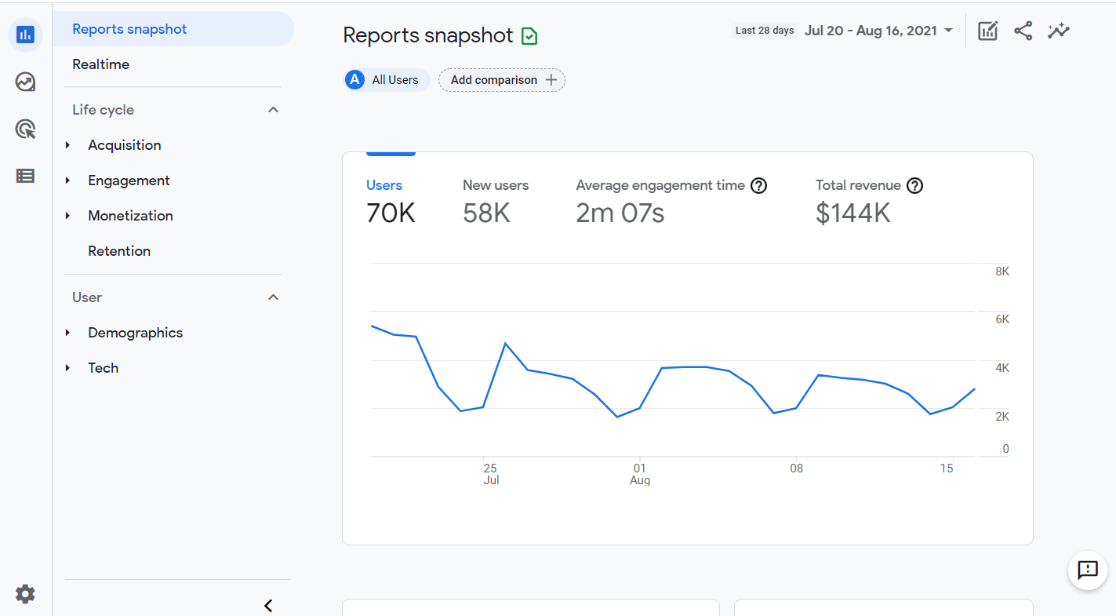
GA4 allows you to build your own customized reports, but you can expect a steep learning curve.
If you use MonsterInsights WordPress Admin Dashboard reports, however, you can expect it to look and function like normal for the foreseeable future.
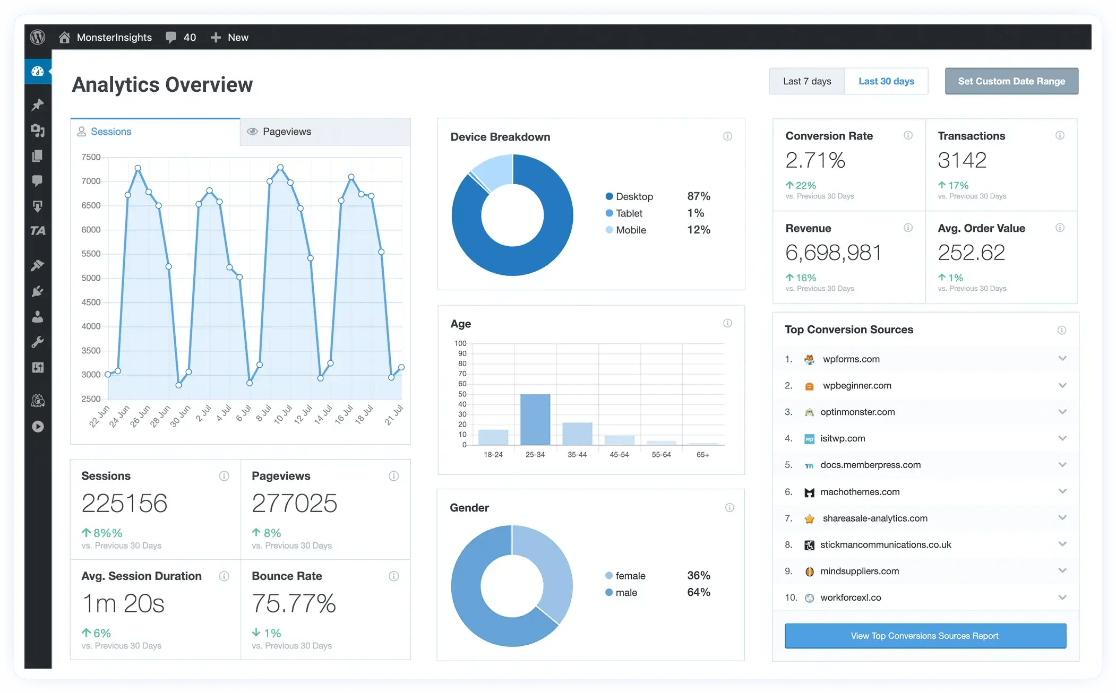
2. The Way Data is Tracked is Different
The way data is stored and reported is much different in GA4. Behind the scenes, there is now a “stream” of data and events versus a focus on sessions. This unlocks tremendous potential for power users who can take analysis to the next level for all types of events and activities.
For everyday users, though, this means you’ll need to start familiarizing yourself with new terms and new report views.
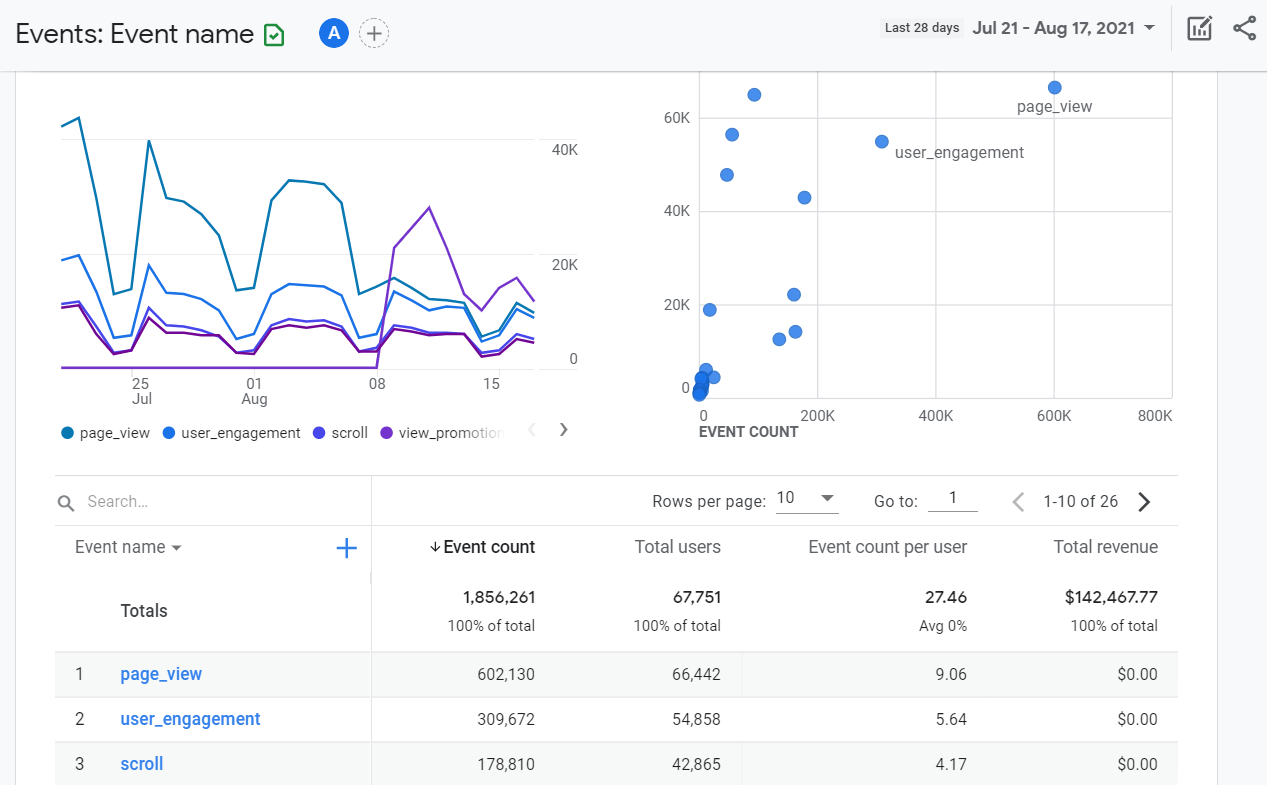
3. Some Metrics are New
In GA4, the way metrics are reported is different, and some are removed all together. One example of this is bounce rate, which is not included in GA4 and has been replaced with engagement metrics like engagement time and engaged sessions.
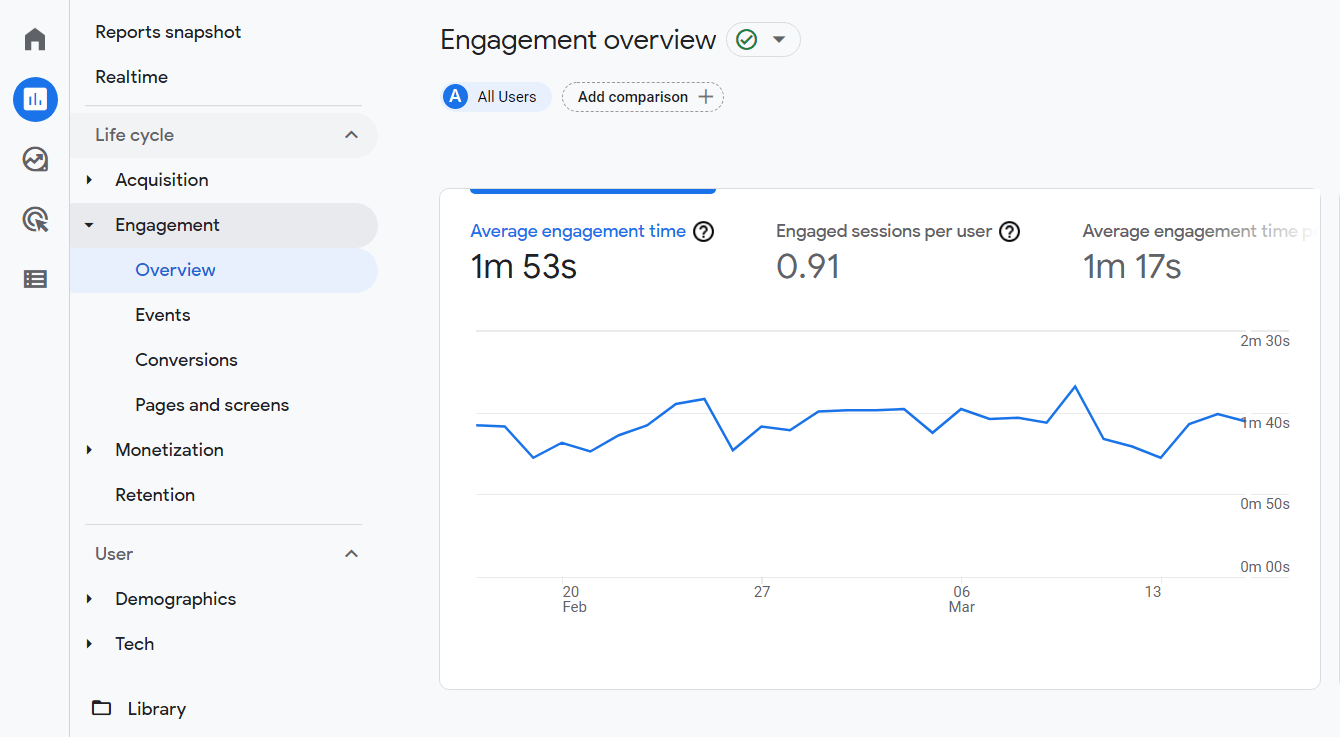
4. Goals are Gone, Conversion Events Are In
If you use goals to measure events, sales, page views, or funnel performance, this has all changed in Google Analytics 4. Now, instead of creating a goal, you will need to tag specific events as a conversion for reporting. Thankfully, Google Analytics 4 lets you create up to 30 types of conversion events per property, but this will require setup on your part.
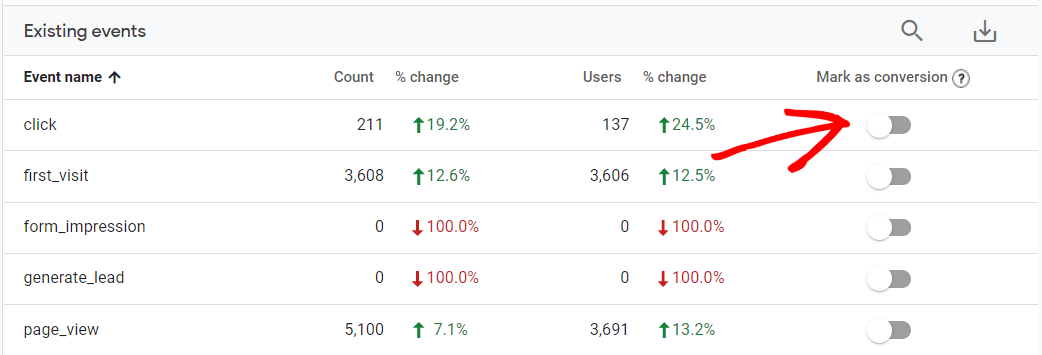
5. Privacy is Emphasized
As you might expect, analyzing user behavior and website activity can result in Personally Identifiable Information (PII) being stored and accessed. With new laws like GDPR and PECR, Google Analytics 4 was built with these restrictions in mind, helping you stay more compliant.
6. AI / Smart Data Modeling is included (And Getting Smarter)
As Google Analytics’ artificial intelligence continues to get more advanced, you can expect to see more helpful insights and ways to improve your marketing and website performance. Additionally, if you’re using Google Ads to drive traffic to your website, you can expect to see new ways to analyze how your marketing spend is translating into sales.
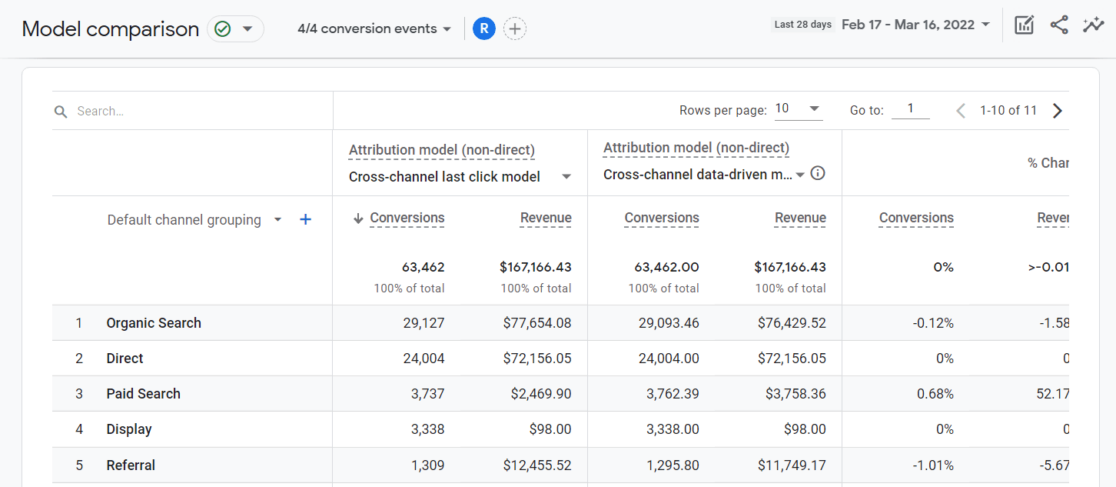
7. Many more new features are still coming!
As new development ended for Google Analytics 3 quite some time ago, you can expect to see only the newest features, reports, and data metrics being added to Google Analytics 4. We expect to see continued updates from the Google Analytics development team.
My Personal Thoughts
Google Analytics 3 is an incredibly powerful and insightful tool, but the analytics world has changed drastically since it was originally released.
Though there have been countless updates to Google Analytics and the way it works over the years, fundamentally the tool has been focused on session-based tracking metrics like pageviews and user behaviors.
Google Analytics 4 is a complete revamp of how to track and measure user activity – on websites, or in apps, built for today’s world.
As I mentioned when we released our dual tracking feature, this is an exciting step in the future of web analytics and will no doubt create new opportunities and insights, but there are definitely drawbacks.
At this time, there will indeed be a steep learning curve for anyone not familiar with events, pivot tables, and filters. Even folks who focus on data analysis will notice a significant transition in the way to measure and track user activity.
Despite new reporting interfaces, new data collection, and other new features, MonsterInsights has always been focused on making it easy for you to see the stats that matter, right inside your WordPress dashboard.
This mission will not change with the cutover to Google Analytics 4.
So while it’s hard to say goodbye to Universal Analytics, I’m excited for what’s yet to come.
How MonsterInsights Helps You Move to Google Analytics 4
We’ve been preparing for this change for quite some time ahead of the official announcement from Google.
All MonsterInsights users have options to start using both versions of Google Analytics easily, with no coding needed.
Can I see which version of Google Analytics my site has currently?
Yes! We’ve built this tool to help you easily determine which version of Google Analytics your site is running.
Simply enter your website’s URL below to see what which version we can detect:
How do I send data into Google Analytics 4?
In order to start with Google Analytics 4, you’ll need to create a new Google Analytics 4 property. If you already are using Universal Analytics, we’ve put together a quick step-by-step guide how to upgrade to Google Analytics 4.
Alternatively, if you’re starting with an entirely new Google analytics account, we’ve also put together a comprehensive guide on how to add Google Analytics to your WordPress website.
(If your Google Analytics account was created after October 14, 2020, there’s a good chance that you already have a Google Analytics 4 property.)
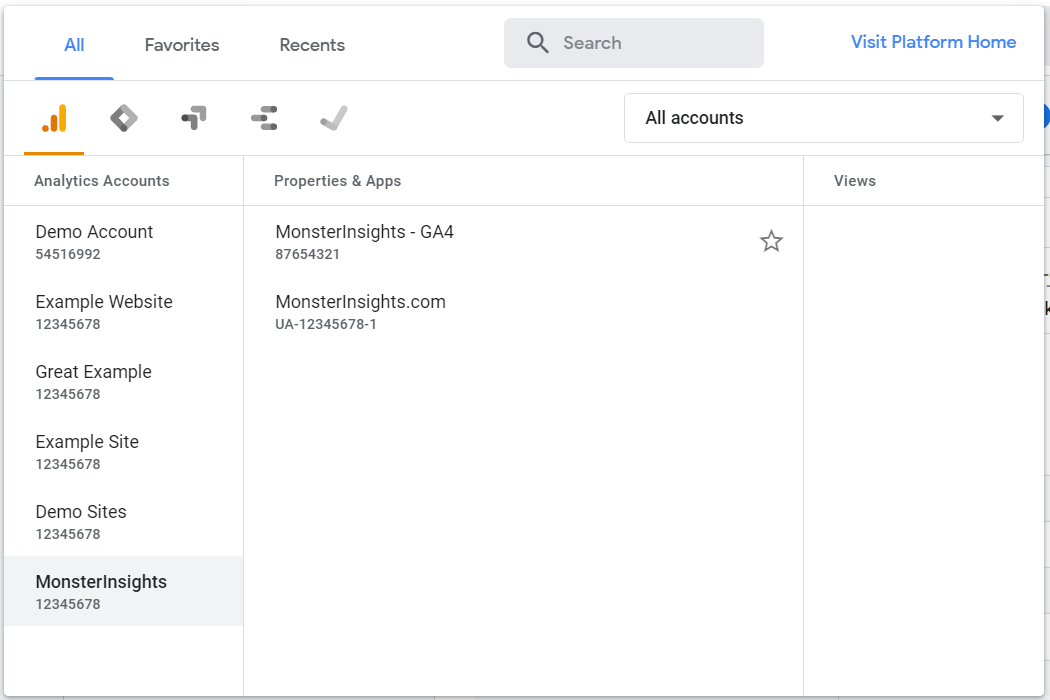
Do I have to make any website code changes?
If you’re using MonsterInsights, we’ve made this transition easy with a feature called Dual Tracking. Our Dual Tracking feature lets you send data to both versions of Google Analytics quickly and easily. This feature will let you “futureproof” your analytics, starting today.
We’ve seen hundreds of thousands of users set up and use dual tracking since we released this feature.
If you’re not using MonsterInsights (get started now!), you will need to ensure that you have the proper tracking codes set up and installed on your website. Any sort of manual code, triggers, and events will need to be rewritten and tested before the sunset date.
Can I import my GA3 data into a GA4 property?
Unfortunately at this time, an automatic import process is not available.
This makes it even more important to start tracking inside Google Analytics 4 as soon as possible, so that you can view and compare historical data and events in the future.
How can I learn more about Google Analytics 4?
Be sure to check out our blog as well as our YouTube channel. We are constantly posting and updating information, and as new details emerge we’ll be sure to share.
What’s Next?
If you haven’t already installed MonsterInsights and started to send data into Google Analytics 4 with our Dual Tracking feature, please do so as soon as possible.
Your last day to send data into Universal Analytics is June 30, 2023.
We also anticipate more changes coming to Google Analytics 4 as more people start to use the platform.
We’ll do our best to keep you updated on all the latest developments that will affect you as we all learn more about this new platform.
Be sure to check out our blog for the latest updates, and keep your version of MonsterInsights updated to get the latest releases and features.
From all of us at MonsterInsights, we thank you for trusting us with your website analytics.
Syed Balkhi and the MonsterInsights Team

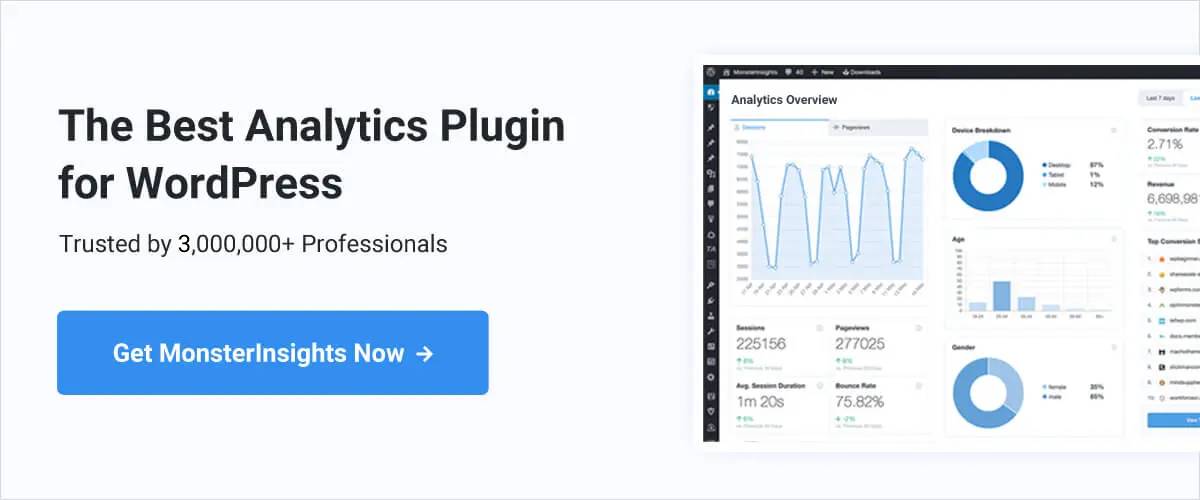
Good post. My question is, if I wanted to turn off UA in Monster Insights, is there a way to do that now? I have dual set up, but how do I get to the ‘future’ now? Or, is dual tracking really all that I can do right now, and future versions of Monster Insights will be set up to make GA4 more primary? Will there be a ‘remove UA’ button someday in the Monster Insights interface? Thanks for knowledge!
Thanks, Steve – great questions! As of now, dual tracking is primarily just a way to send data into both your UA and GA4 properties, so that you’re building up historical data in GA4 while still getting to use Universal Analytics, too. There’s very little difference in MonsterInsights reports between the two – just a couple different metrics (like Total Users in GA4 in the place of Bounce Rate). This is all by design to keep the transition between Analytics versions as easy as possible for our users. So if you’re dual tracking, you’re totally set up for now!